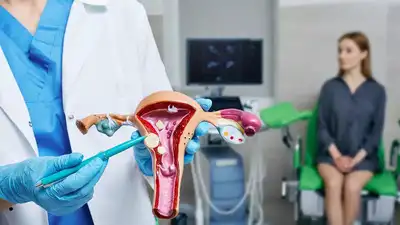ARTICLE AD BOX

Many women continue with their daily lives with abdominal discomfort, menstrual irregularities, and bloating without realizing that the underlying cause may be something more than hormonal.
Even when they do decide to seek medical help, their symptoms are often not taken seriously. Recently, tennis player Venus Williams opened up about her struggle with uterine fibroids, stating how she was told again and again that her pain was ‘normal’ before fibroids were finally diagnosed. The National Center for Biotechnology Information states that uterine fibroids are extremely common, affecting over 70% of women worldwide.
Despite the high prevalence, they usually remain misunderstood or undetected until symptoms escalate. Giant fibroids can also mimic a pregnancy and have the potential to pose significant diagnostic and surgical challenges. Fibroids may be benign, but their impact isn'tUterine fibroids or leiomyomas are common growths of the uterus that generally occur during the reproductive years of a woman’s life. They are non-cancerous (benign) in nature; however, they are still capable of causing extreme discomfort and complications like anemia or infertility.
People may even fail to know about the presence of fibroids, as in many cases, symptoms do not appear at all or arrive late. Genetic factors and estrogen and progesterone levels in the body are typically cited as the reasons for the development of these masses.
Fibroids vary vastly in size and number. While some of them are too small to see with the eyes, others can grow large enough to make a person look pregnant. In such cases, surgical removal is required as a form of treatment.When the uterus grows without warningA 49-year-old woman was experiencing persistent pain and a constant sensation of heaviness in the abdomen for two months. Initially ignoring it as a part of her perimenopausal transition, she did not seek immediate medical attention. Her last period had arrived two months prior, and she also noted that her previous menstrual cycles were regular. However, her discomfort kept increasing, and over time, her abdomen became visibly enlarged.
Upon examination, a massive, palpable fibroid weighing 3.5 kg was found in her uterus pressing against the bowel, bladder, and ureters, causing severe discomfort and risk of complications. This 26-cm mass was the size of a full-term pregnancy. This was a rare and giant uterine fibroid, also known as a giant uterine leiomyoma, that caused severe discomfort and could have led to serious health problems. Surgery was essential in this case, given the size, symptomatic presentation, and proximity to vital organs that could have been hampered because of the fibroid.
The patient was recommended to undergo a Total Abdominal Hysterectomy with the removal of the fibroid, separation of internal adhesions, and placement of stents in both ureters under general anesthesia. Myomectomy was performed to remove the fibroid.
The uterus, cervix, bilateral fallopian tubes, and ovaries were also removed. Since the fibroids were close to the ureters, a urological procedure called bilateral ureteric stenting (DJ stenting) was used to protect them.
The woman had a speedy recovery and was discharged after four days in a healthy condition.Signs the uterus might be under pressureUterine leiomyomas start as asymptomatic but may not always remain so. Symptoms that could indicate the presence of fibroids include: Changes in menstruation: Women with fibroids may experience excessive menstrual bleeding or may not get their period for long periods. This condition is known as amenorrhea and is often mistaken for a perimenopausal symptom by women in their 40s.
Periods may also be painful and last longer than usual. Growing stomach area: Some women notice swelling or bloating in the abdomen. This is not due to weight gain but from enlarging fibroids that create a visible distension. The bump may grow enough to look like a pregnancy.Frequent urination or trouble urinating: Fibroids that press against the bladder can cause an increased urge to urinate or make it difficult for an individual to fully empty the bladder. Constipation: When fibroids press against the rectum, they can slow down bowel movement, which can quickly lead to persistent constipation or difficulty passing stool.Pain in the stomach area or lower back, or pain during sex: Depending on their size and location, fibroids can cause lower abdominal or back pain, as well as discomfort during sexual intercourse, particularly when pressure is placed on the uterus.Uterine fibroids often go unnoticed or are dismissed as routine menstrual issues, leading many women to delay seeking care. However, when left unchecked, fibroids can grow large, cause significant discomfort, and complicate surrounding organs. This highlights the need for timely diagnosis, careful imaging, and personalised treatment planning, especially in cases involving atypical symptoms. With the right approach, even complex cases can be managed effectively, allowing women to regain comfort and control over their health.Authored by: Dr. (Lt Col) Leena Sreedhar, Chairman - Obstetrics & Gynaecology, HOD Department of Academics and Research, Manipal Hospital Dwarka, New Delhi
Why uterine fibroids are on the rise and how to manage this silent growth



.png)
.png)
.png)
















 2 hours ago
6
2 hours ago
6









 English (US) ·
English (US) ·